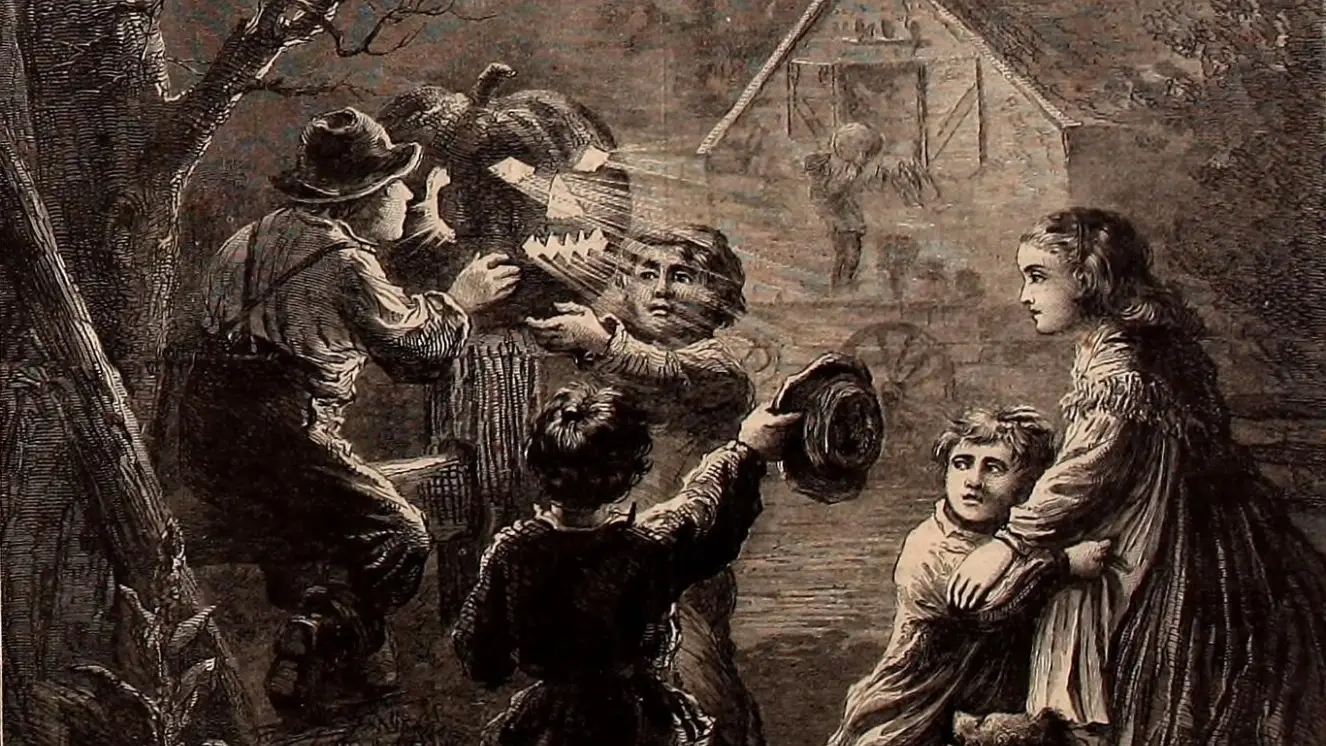CIVIL WAR HALLOWEEN HISTORY: TRICKS AND TREATS DURING CONFLICT

For many decades, the formula has been simple. Kids and adults alike don various costumes, gatherings are held, and of course, neighbors come together for trick-or-treating. Even when wars alter these festivities, Halloween finds a way. However, in some of the earlier renditions of the modern version of this fall holiday, war was in our nation’s backyard. Civil War Halloween traditions were much different than today. This was not only due to the conflict, but because Halloween had yet to emerge as a nationally accepted holiday.
Was Halloween Celebrated During the Civil War?
There are instances of Civil War Halloween celebrations taking place in the 19th century throughout Canada and the United States.
With more and more Scottish and Irish immigrants finding their way to North America, the Canadians were the first to adopt Halloween traditions before the U.S. got on board.
As for Civil War Halloween traditions, there are a few notable examples of festivities taking place:
- Confederate President Jefferson Davis was shown in a political cartoon published by Harper’s Weekly donning a ghostly, gaunt face. He is shown harvesting crops in 1861 that don skulls on top.
- Two years later, the publication depicted Copperhead Clement Vallandigham as a pumpkin. This crop would quickly become the North American symbol for Halloween.
- In 1862, the Peoria Morning Mail mentioned a variety of pranks, or “tricks,” being played by boys during “All-Hollow E’en.”
There are other, smaller, personal entries during the Civil War Era that point to some of the earlier versions of Halloween. This is despite not being a widespread holiday just yet.
States With High Irish Populations
Some of the populations with more Irish and Scottish immigrants during this time were among the first to celebrate Halloween.
This makes perfect sense seeing as it was these cultures that brought over their celebration borrowing from Samhain and All Saints Day to America.
Maryland was one of the few states participating. It was virtually the only one in the North with widespread celebrations.
While you might expect other Irish-heavy populations, including those in Boston and New York to possibly participate, the evidence says otherwise.
However, many communities among the southern colonies participated in Halloween celebrations.
Keep in mind that the views on Halloween during the Civil War were likely not as harsh as the Puritan movement and other conservative efforts to keep the perception of witchcraft out of society.
Still, it’s not like these efforts were fully dispelled either, further adding to the complications of the celebration.
Child Soldiers Traded Pranks for War
It’s hard to say for sure but the lack of concrete evidence points to a lack of celebrations among Civil War fighters during Halloween.
The reasons for this are pretty obvious—rationing supplies and military concerns trump leisure activities—however, it’s important to remember that many fighters were simply kids.
It’s believed that between 10% to 20% of all Civil War fighters, were under the age of 18.
Kids were facing unimaginable horrors of war, tough terrains, sickness, and disease spread out throughout the ranks.
It’s unfortunate that many kids never had the chance to live out their childhoods during this time, much less engage in Halloween activities.
Civil War Halloween Activities Were Not Nearly as Scary as the Conflict Itself
What everyone experienced on the battlefield is the true horror felt during the Civil War period; however, there are also plenty of reports of supernatural activity as a result of the conflict.
You’ll find reports of ghosts appearing on battlefields, particularly those with a high number of deaths, like Gettysburg.
Furthermore, some of the homes of participants, such as military leaders, have received reports of visitors spotting weird, unexplainable activities along with ghostly figures appearing.
In addition to the spooky vibes associated with the battles, it has been well documented that First Lady Mary Todd Lincoln would hold seances, with it believed that President Abraham Lincoln himself attended at least once.
Overall, not everyone celebrated Halloween during the Civil War but many communities still found a way to celebrate during an otherwise hectic, deadly period in our nation’s history.
Suggested reads:
- Try Out Ghost Hunting at the Devil's Den Gettysburg Battleground
- Who Will Kamala Harris Pick For Her Cabinet? & Its Impact on Vets
- A Haunting Look: The Hunt For Civil War Ghosts
Image source: Harpers Weekly Nov. 1867 issue



